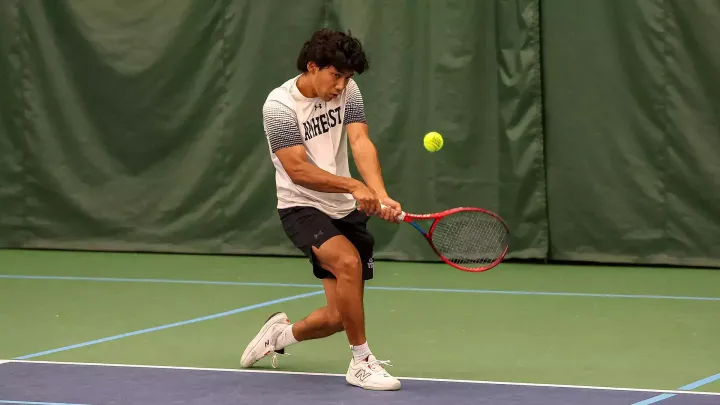Root, root, root for the home team-twice
This is not exactly news to anyone. Nevertheless, I’ve come to realize that, at least in the winter, there are other factors at least partially responsible for the poor attendance. In two separate, yet somewhat related cases, it’s become rather obvious that scheduling, at least in part, has been responsible for the poor attendance at Amherst’s athletic events.
Consider the men’s ice hockey team. The Jeffs played three home games in January-including back-to-back contests against the two schools responsible for the last six NCAA Division III championships, when there was nobody on campus. It wasn’t early in Interterm; it was before Interterm even started.
As a result, for their showdown against five-time NCAA champion Middlebury College, the Jeffs played in front of a largely pro-Middlebury crowd. Against the defending NCAA champions, Norwich University, it was even worse, since the other winter teams-the hockey team’s primary fan base from the day before-were all in action themselves.
Yet, whereas the Interterm problem was made significantly worse this year by the fact that the January term did not start until Jan. 8, which the athletic department admittedly had no control over, another scheduling problem could easily be solved if the NESCAC moved towards a schedule with more basketball doubleheaders.
As it stands, the two basketball squads play two or three doubleheaders each year, including the home and away double-dips against Williams College. The Williams doubleheaders always prove to be one of the best attended athletic events all year, and much of that is aided by the back-to-back nature of the games.
Much of that is because it’s Williams, but why would it be so hard to have doubleheaders for most of our opponents? For non-conference teams, that’s easy. The men and the women, except on rare occasions, don’t play the same teams at the same time. Often, they don’t even play on the same night.
But now, as one of the few positive outcomes of the April 1998 policy changes, such a possibility-the NESCAC going to men’s and women’s doubleheaders for all of its conference basketball games-is not only feasible, but it’s better.
The traditional arguments against doubleheaders at any level are two-fold. First, they inhibit scheduling autonomy, since sports teams are committing to playing at the same site and on the same date as their counterparts of the other gender. Second, at larger schools, doubleheaders are bad for revenue, since 10,000 tickets for one pair of games is, clearly, not as profitable as 10,000 tickets for two separate games on separate dates.
In the NESCAC, however, neither of these issues is a concern. There’s even precedent-the fall and spring seasons, when Saturdays usually feature up to five teams from one school all playing at the same site against the same opponent.
In addition, travel costs are somewhat reduced by teams traveling together and staffing the events is easier. From a fan standpoint, it’s no contest. Having Amherst’s fall teams all in action against the same opponent on the same day pools the fan base for all the teams and draws a larger crowd to every home game. The same is true in the spring with lacrosse and baseball and softball. The question, then, is if it works in those two seasons, why couldn’t it work in the winter?
The answer is that it could, but the NESCAC has not yet realized how to capitalize on its new status as a centralized conference. Mandating conference doubleheaders is a move that would have positive consequences.
This would also have positive consequences for the athletic staff, who are asked to work too many dates during the months of January and February. It would have positive consequences for the fans, who would be more inclined to come to a doubleheader than they would be to go to two separate home games, and, most important, it would have positive consequences for the players, who, perhaps for the first time, would find that their home games were always played in front of crowds that were largely pro-Amherst.
It’s a simple step, and it’s one that the NESCAC should take.



Comments ()